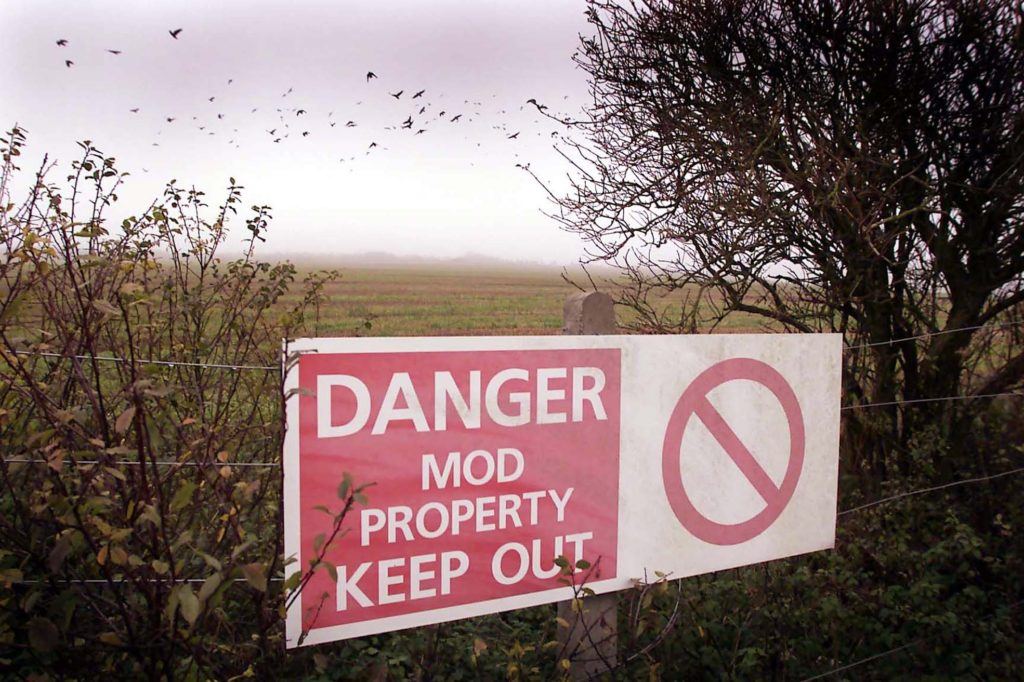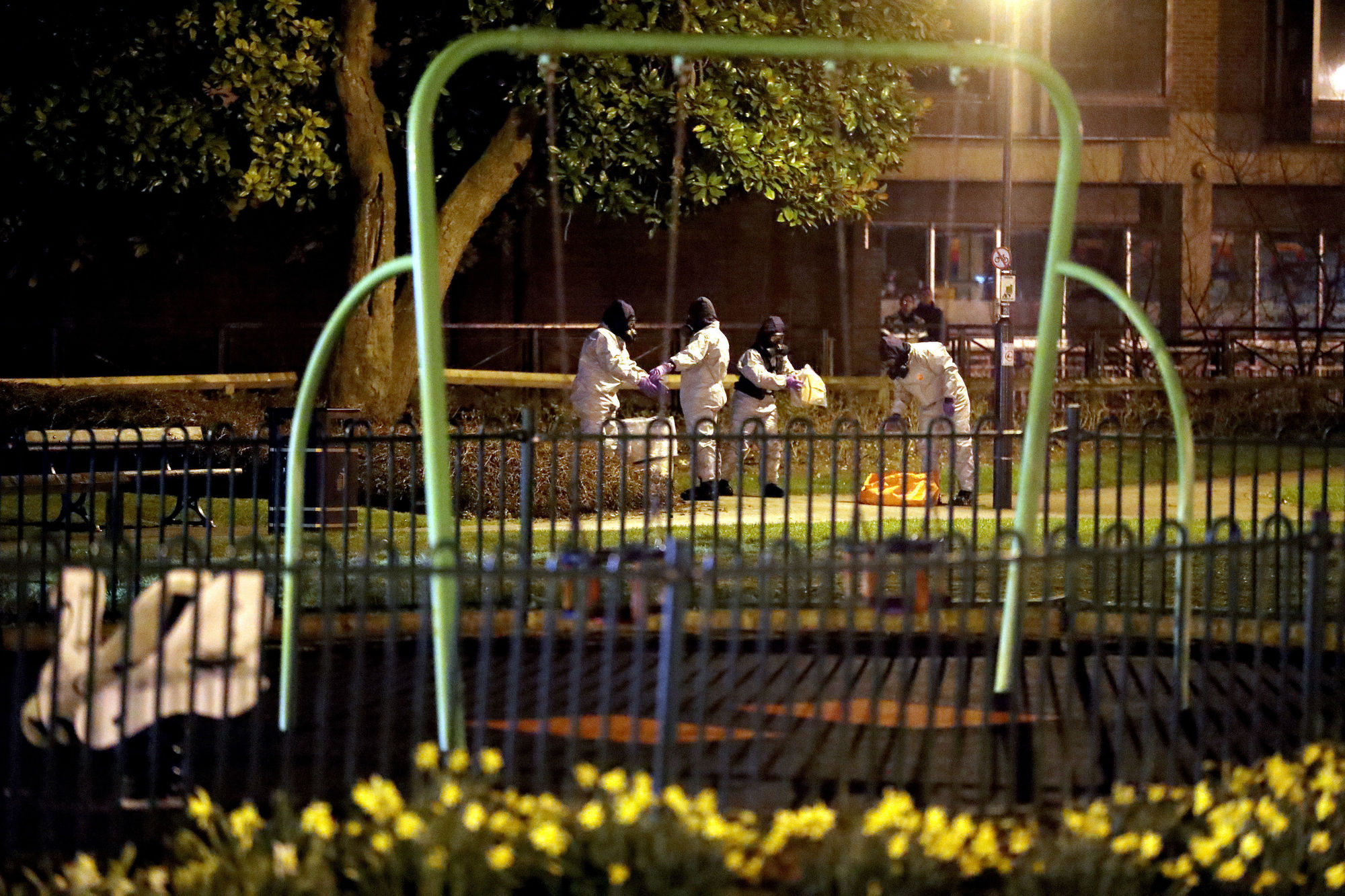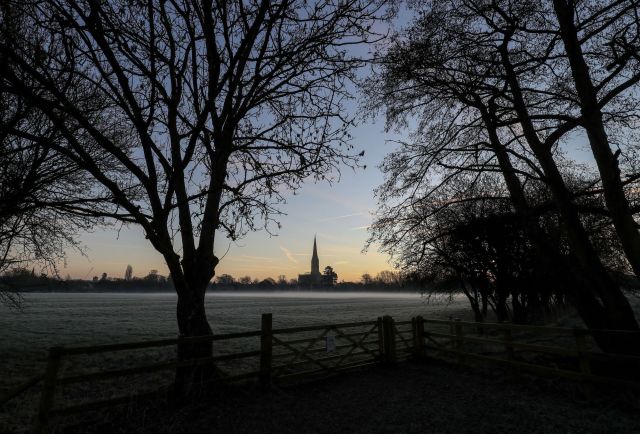Dawn breaks behind Salisbury Cathedral as a frost covers the ground in the Harnham Water Meadows in Salisbury, Wiltshire.

When I was at school in Salisbury, a teacher once told me – with just a hint of pride – that, come the Third World War, our home town was third on the Soviet hitlist of British places to be nuked. Two bombs would be detonated over the North Sea, for reasons that I don’t quite recall; and then, ahead of London, it would be the turn of Salisbury. Impressively, the teacher was even able to specify the precise target: Beach’s, a second-hand bookshop housed in a 14thcentury town-house just outside the cathedral close. This, for a 12-year-old in 1980, the year of Solidarity and Reagan’s election as US president, was unsettling news.
Presumably – unless my teacher was a spy, which I have reasonable grounds to assume he wasn’t – all this was nonsense. Nevertheless, it did have a spectral aura of plausibility. North of Salisbury, dotting its eponymous plain, lay a host of army bases. South of it were the Chilmark quarries, excavated during the construction of the city’s cathedral, and where the Ministry of Defence was darkly rumoured to host an array of top secret weapons, wheeled around on silent trains.

Most sinister of all was Porton Down, Britain’s top secret military research facility, where boffins in white coats and gas masks were confidently assumed by all of us at school to be breeding killer monkeys and cooking up cocktails of lethal pathogens. “Just one shattered test-tube to wipe out the world,” as Peter Hammill put it in his 1979 song about the base. Growing up in Salisbury during the Cold War, we were never allowed to forget that Lord of the Flies – that terrifying pathologist’s report on the human capacity for violence, all set against a background of nuclear war – had been written by a schoolmaster working in the city.
Yet it was not all jitters and foreboding. If there was rarely a day, as a child, when I did not look at the cathedral, and wonder what it would be like to see its great spire vanish in a flash of blinding light, then this was in large part because, daring myself to contemplate my deepest fear, I knew in my heart of hearts that it would never happen. My confidence in the deep and ancient magic of the landscape around the city ran too deep to imagine that it could ever truly be destroyed.
Broadchalke, the village some eight miles from Salisbury where I grew up, had been the home back in the 17th century of John Aubrey: a biographer, an antiquarian, a tireless recorder of curiosities, and wonders, and old wives tales. “I was inclined by my genius from childhood to the love of antiquities,” he wrote, “and my Fate dropt me in a countrey most suitable for such enquiries.”
He it was who first proposed that Stonehenge – far from being a Roman or a Viking construction, as his contemporaries tended to assume – had been erected by the Druids. Aubrey got that wrong; but the theory was on the right lines. That the great stones were, in reality, a millennium and a half older than the Druids only rendered even more haunting the sense of mystery that clung to the landscape around Salisbury, and to which Aubrey had responded with such sensitivity and insight. The menace of Porton Down was less potent in my imaginings than the eeriness of the prehistoric monuments that dotted Salisbury Plain. Dread of the future always took second place to awe at my home town’s past.

The end of the Cold War seemed to redeem Salisbury from the threat of Russian WMDs. The spirit of Aubrey, it appeared, had triumphed over that of Lord of the Flies. In Chilmark the barbed-wire fences came down, and the quarries were given over to the growing of marijuana. In Porton Down, a statement was issued assuring the public that no aliens, “either alive or dead”, had ever been taken to the site. In 2005, excavations at Blick Mead, a warm water spring a mile from Stonehenge, began to reveal traces of human habitation reaching back some 10,000 years old, all the way back to the very beginnings of continuous human habitation in Britain. The landscape around Salisbury was revealed to be even more wondrous and ancient than my childhood self had dared to imagine.
Yet Salisbury itself, although dominated by the soaring beauty of its medieval spire, and although only eight miles afrom the ever-expanding science park of Porton Down, is not a city that has ever felt greatly in the shadow of either its past or its future. It has always been far too comfortable in its skin for that. The cathedral, despite boasting an original copy of Magna Carta and the world’s oldest working clock, does not stupefy or overwhelm with its sense of history: for its setting, so admired by both Constable and Trollope, is one characterised by a softness, a gentleness, that seems almost to anaesthetise any sense of the Middle Ages.
Beyond the close, a poultry cross features alongside a quite staggering array of shoe shops; a severed hand in a medieval pub alongside bog-standard food in chain restaurant after chain restaurant. “Snoresbury”, the city has been nicknamed – and not entirely without justification. It was a place where – for all my childhood anxiety that a hydrogen bomb might at any moment be denotated over Beach’s bookshop – nothing much ever seemed to happen. It was, for good and bad, the epitome of Middle England.
Which is precisely why, of course, to those of us who love it, the use of chemical weapons on its streets feels such a violation. It seems almost a blasphemy that a city boasting both the loveliest cathedral close in Britain and a shopping centre as reassuringly dull as the Maltings should now be notorious as the first place in Europe ever to be targeted with nerve agent.
Yet if there is any silver lining to the cloud currently lowering over my home town, it is this: that it serves as a reminder of everything that has always made it distinctive, peculiar, weird. Salisbury is a most extraordinary city, only pretending to be dull.










Join the discussion
Join like minded readers that support our journalism by becoming a paid subscriber
To join the discussion in the comments, become a paid subscriber.
Join like minded readers that support our journalism, read unlimited articles and enjoy other subscriber-only benefits.
Subscribe